JulijaDmitrijeva/iStock/GettyImages
When it comes to good nutrition, the one message you hear over and over again is the importance of eating a variety of foods from all the food groups. The reasoning behind this recommendation is to ensure you get all the essential vitamins and minerals your body needs to function at its best. However, you may be able to get more bang for your buck, so to speak, by combining certain foods to improve the absorption of those nutrients. This is especially helpful for those nutrients many Americans have a tough time getting enough of, including iron; fat-soluble vitamins A, D and E; vitamin C; calcium; and magnesium.
Iron and Vitamin C Better Together
Many women and children aren't getting enough iron in their diet to meet their needs, according to the National Institute of Health's Office of Dietary Supplements. Iron is found in a variety of foods, including meat; poultry; some vegetables, including beans, spinach and broccoli; and fortified foods such as bread and cereals. However, your body absorbs less than 20 percent. Adding vitamin C rich foods, such as peppers, tomatoes, strawberries and oranges, while eating iron-rich foods increases iron absorption. Good combinations include meatballs with tomato sauce; steak and peppers; vegetarian chili with beans that includes peppers, onions and tomatoes; sliced strawberries on your cereal; or a glass of orange juice with eggs and toast.
Adding a Little Fat for Vitamins A, D and E
Absorption of fat-soluble vitamins requires bile, which is released only when your body detects fat in the small intestines. Adding a little fat to your meals rich in vitamins A, D and E enhances the absorption of these hard-to-get nutrients. Get your vitamin A from foods such as eggs and milk and as beta-carotene in carrots, sweet potatoes and leafy greens. Food sources of vitamin D include eggs, fatty fish such as salmon, and fortified milk. Vitamin E is found in almonds, leafy greens and vegetable oils. Cook your salmon in oil, eat the yolk of the egg, drink low-fat milk and use regular dressing in your salad to get the most fat-soluble vitamins out of every bite.
Improve Calcium Absorption With Vitamin D
Vitamin D improves absorption of calcium, which is why milk is fortified with the fat-soluble vitamin. If you're not a milk drinker, you can get calcium from greens such as collards, spinach and kale; broccoli; sardines and salmon with bones; and fortified foods such as juice and cereal. Good combinations of vitamin D and calcium for better absorption include broiled salmon served with collards, a glass of calcium-fortified orange juice with your scrambled eggs or milk with fortified whole-grain cereal.
Max Your Magnesium
More than 60 percent of adults and 90 percent of teen girls don't get enough magnesium in their diet, according to the Environmental Working Group. If you're working on improving calcium absorption with vitamin D, you might as well add magnesium-rich foods too. Both calcium and vitamin D help you absorb more magnesium from the foods you eat. Foods rich in magnesium include whole-grain cereals, leafy greens, wheat germ, beans, nuts and seeds. Ideas: Make oatmeal with milk instead of water and add chopped almonds, add chopped eggs to your kale salad or sprinkle wheat germ in your yogurt.
Related Articles
Nutrition to Help Your Child Grow Taller

Can You Change Skin Tone with Food?

How to Control Sebum in Hair with ...
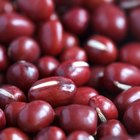
Nutrition Information for Adzuki Beans
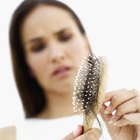
Is Zinc Good for Hair Growth?

Nutrition Information on Blueberries

How to Make Scrambled Egg With Spinach

A List of Foods That Contain Choline
Low-Potassium Meals

Diet Menu to Lower Potassium

Foods to Eat After Playing Football

Vitamins for Mental Alertness

List of Foods With a High Water Content

Food Sources of Phosphatidylcholine
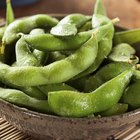
The Nutritional Value of Edamame Beans
Diets of Asian Martial Artists

Top Vegetables With Selenium
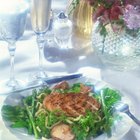
High Fiber & Protein Diet Menus
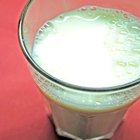
How to Make a Cinnamon Milk Face Mask
Selenium For Children
References
- Office of Dietary Supplements: Iron
- Environmental Working Group: How Much is Too Much? Appendix B: Vitamin and Mineral Deficiencies
- Berkeley Wellness: Fat-Soluble Vitamins
- Sharecare: How are Fat-Soluble Vitamins Absorbed By the Body?
- National Osteoporosis Foundation: Foods for Bone Health
- Linus Pauling Institute: Magnesium
Writer Bio
Jill Corleone is a registered dietitian and health coach who has been writing and sharing her love of food, nutrition and health with anyone who'll listen for almost 20 years. Her work has been featured on the Huffington Post, Diabetes Self-Management and Working Mother.